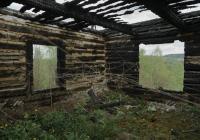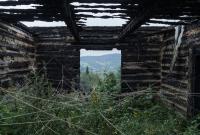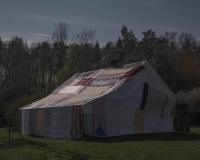Subscribe to the Newsletter
Your cart is empty
Shop now









Sympathetic Magic
The term 'sympathetic magic' was first used by James Frazer in the field of cultural anthropology. He defined it as a basic type of magic based on the idea that an analogous action should produce an analogous effect.
Jan Lutyski says that translating this term was really tricky for the translators. They decided to use it anyway because it was already accepted in Polish and other languages at the time of the translation. In Polish, the word 'sympathetic' makes people think of something nice and pleasant. But in Frazer's work, 'sympathy' has a different meaning. It's about an implicit connection between objects that makes them interact.
In my series A Lair I return to my childhood home. A house hidden deep in the woods, filled to the brim with objects collected over the years by my grandmother. The cabinet of curiosities, full of roots and other artefacts brought from the forest, became the starting point for my project. Tackling the excess of dried flowers that filled the house and gathered dust was my first intervention in this space. After gathering the flowers and making a chocho, I took it to pond in the forest and ritually burned it. This was a sanctification of the work my grandmother had put into gathering the flowers, as well as a reference to the mystical essence of the chochoł in Polish culture, and a reference to the burning of marzanna. This way of thinking, that an analogous action should produce an analogous effect, was a way of working in this project.
I also used sympathetic magic together with sculptor Aleksandra Przybysz in our Biodegradable Space project. During the pandemic, we lived in a village surrounded by forest and our imagination. The time of the virus largely served post-apocalyptic imaginings and the emptiness present in them. During our wanderings in the forest, we came across abandoned huts and the ruins of palaces. As we learned about the local legends and tragic stories that took place in each of them, we wove for ourselves a new reality full of haunted houses and ghosts that followed us.
In this alternate reality, we reached for all sorts of magical activities to break through the rational approach that would help us cope with all the cruelty. One such action was to resort to folk knot magic. We decided to tie up the abandoned houses we found in order to close their memories, physical boundaries and metaphorically lock up their past.Another site-specific installation I made with Aleksandra Przybysz is Dormant. We glued together household materials, such as sheets and curtains, to create a sheet the length of several materials. With it, we covered a house that belonged to Alexandra's great-grandparents in the past and then sewed it inside the fabric. The work is linked to memory and family traumas passed down from generation to generation. The action aims to symbolically sever and end the cycle of inheritance of collective fear. The house is a total and cosmogenic space here; by influencing it we affect the psychological spectrum of Alexandra and her family.
Tomasz Kawecki is part of Issue 17 by Guest Editor Torbjørn Rødland.
Check out his Artist Feature In Praise of Shadow.